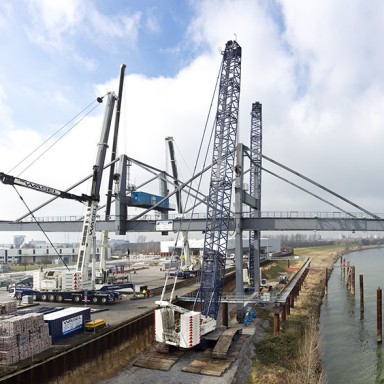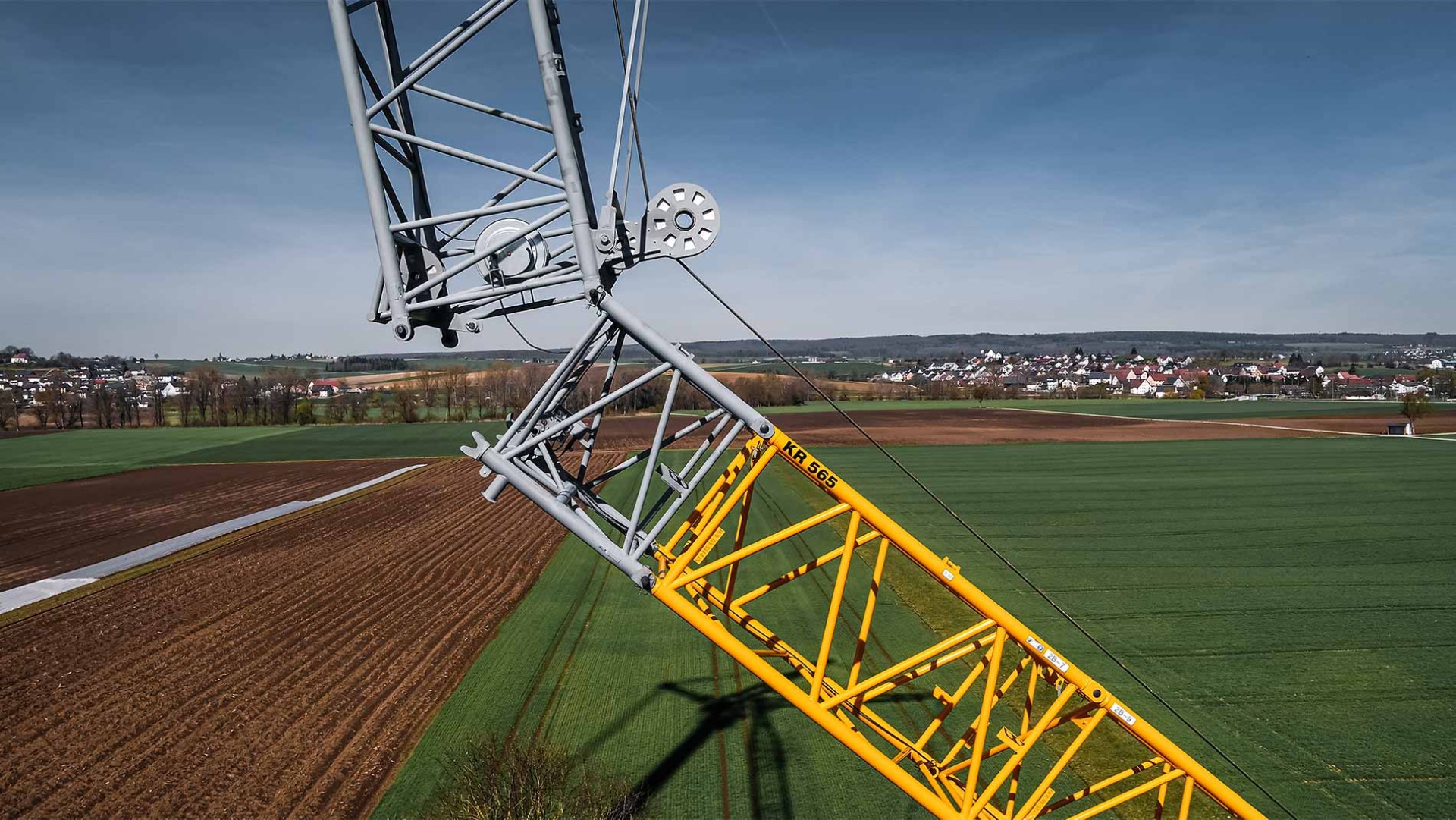
5 minutes | magazine 02/2022
LTM 1650-8.1 NK system luffing jib
The open fork in the lower fork/ finger connection makes it possible to open the luffing jib during the assembly process.
NK intermediate section
Assembling and erecting long luffing jibs in constricted conditions is always a challenge in everyday crane operations. We discussed the situation with customers and found a solution which will be available as from next year. It’s name – the NK system. Jennifer Enderle, a Designer in the Lattice Boom Department and responsible for the development of the new system, provides some insights:

Jennifer Enderle - Lattice Jib Design
Sometimes it’s just a matter of a few metres, but the space available on the site is often simply not enough to assemble a luffing jib on the ground and then erect it on the crane. Our challenge was therefore to find a fast, safe and easy solution for the space-saving assembly of a luffing jib. And the solution had to ensure that there was no need to use a platform or cage for working at heights.
Our solution is to hinge the luffing jib during its assembly. That is also the reason behind the name – NK stands for the German words Nadelausleger (meaning luffing jib) and Klappen (meaning hinges) To achieve this, we designed a new, additional lattice section in which the hinge function is included, the NK intermediate section. The new system means that you on average require 30 percent less space on the site. For assembling a 63 metre luffing jib, for example, you require 30 metres less space. The system works for luffing jib lengths from 35 metres to the full length of 91 metres.
The new NK system enables you to assemble luffing jibs where previously there was not enough space.
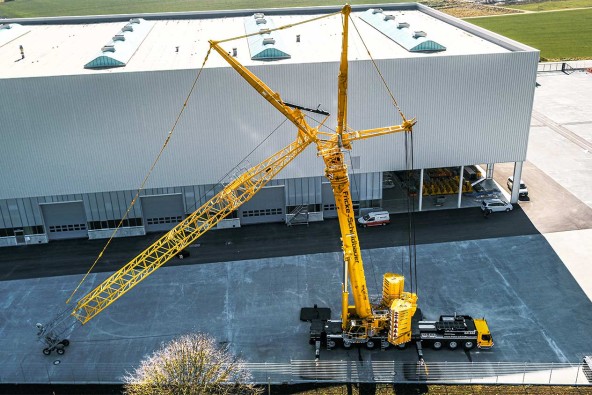
Up and down - After assembling the first half of the luffing jib, it must be luffed down whilst the telescopic boom is luffed up.
Assembly and raising process
The 7 metre NK intermediate section, which is used instead of a conventional 7 metre intermediate section, splits the luffing jib into two halves – the “first luffing jib half” and the “second luffing jib half”, although, depending on the length of the luffing jib, the halves are not always exactly the same length. The main point is that the NK intermediate section has a separating point where it is hinged. This is achieved by an open fork in the bottom fork/finger connection. In other words, the NK intermediate section is divided into two parts: NK intermediate section 1 and NK intermediate section 2.
In the first stage of the process, the first half of the luffing jib, including NK intermediate section 1 is assembled whilst it is supported on a pulley cart. The telescopic boom is then luffed up and at the same time the luffing jib is lowered until the jib head hangs downwards. Depending on the length of the jib head, the boom may also have to be extended.
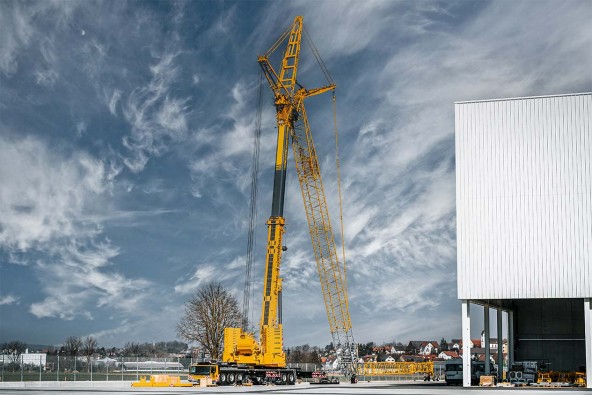
Space-saving - The second half of the luffing jib is installed on the first half, which is hanging downwards.
At this point NK intermediate section 2 is installed by pinning it to section 1 at the top fork/finger connection. The bottom connection is left open. Then follows the assembly of the second half of the luffing jib, including the head. The remainder is almost automatic – extend the telescopic boom and raise the luffing jib. It sounds simple – and it really is.
Safety is paramount
All the work can be carried out from the ground or from near the ground using a folding ladder. The whole point is that no work has to be carried out at height using a platform or cage. The NK system is also monitored in full by the control system and features both electronic and mechanical safety devices.
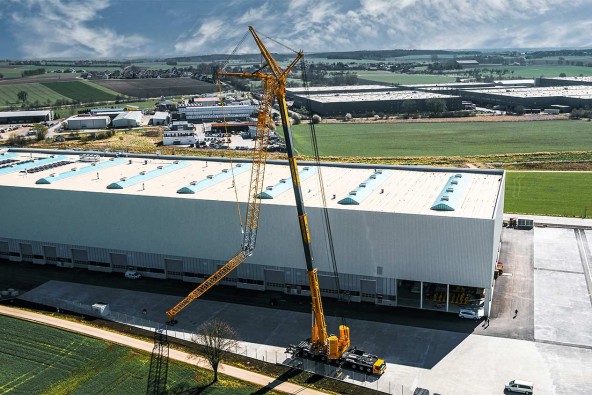
Closing the gap - The NK intermediate section is closed by telescoping the boom and raising the luffing jib.
However, the NK system does have one restriction that we must mention – there are ranges in which the lifting capacity of the standard luffing jib cannot be achieved. As the luffing jib is not guyed at the head section as usual, but instead at the NK intermediate section 1, the second half of the luffing jib becomes a cantilever with the reductions in lifting capacity that this involves. The good news is that in the main operating ranges, the NK system is nevertheless more powerful than our next smaller luffing jib crane. And there are even ranges were the new system is more powerful, particularly if a large radius is required.
The NK system will be available for both the 54 and the 80 metre telescopic boom, in other words T3NK and T5NK. An intensive period of testing is currently underway. The NK system will also be available for LTM 1650-8.1 cranes which have already been delivered. Please do not hesitate to ask if you require any further details.
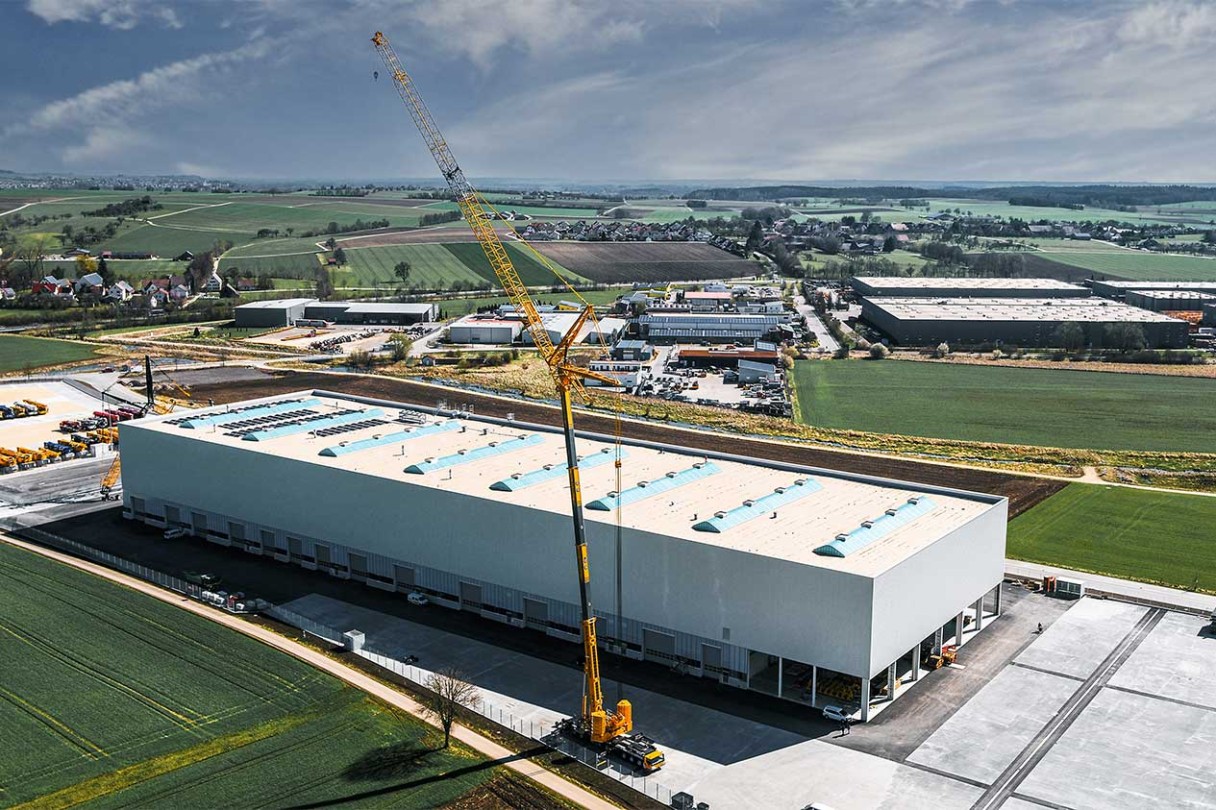
Cantilever - The NK system requires the luffing jib to be guyed on the NK intermediate section.
This article was published in the UpLoad magazine 02 | 2022.


